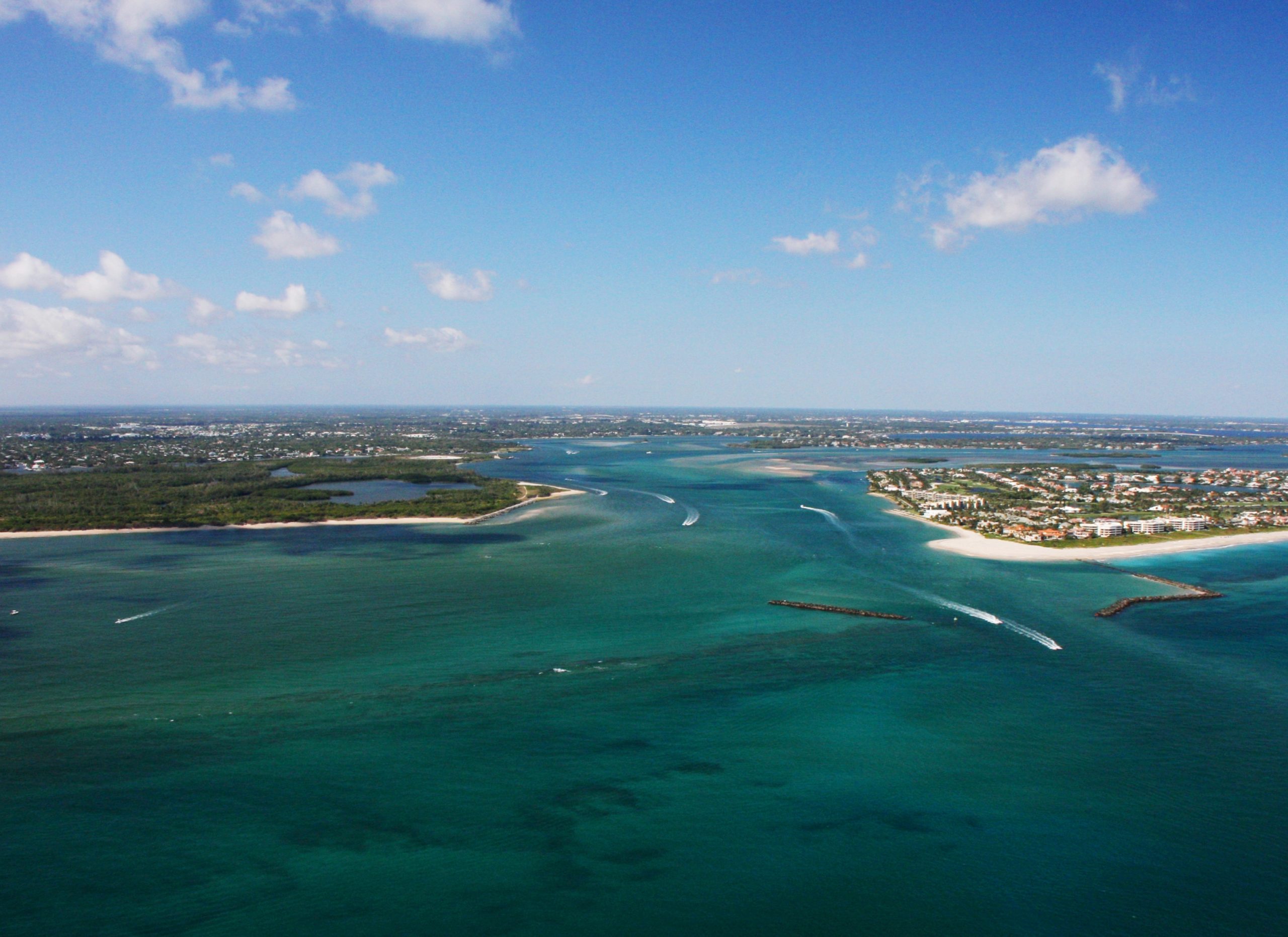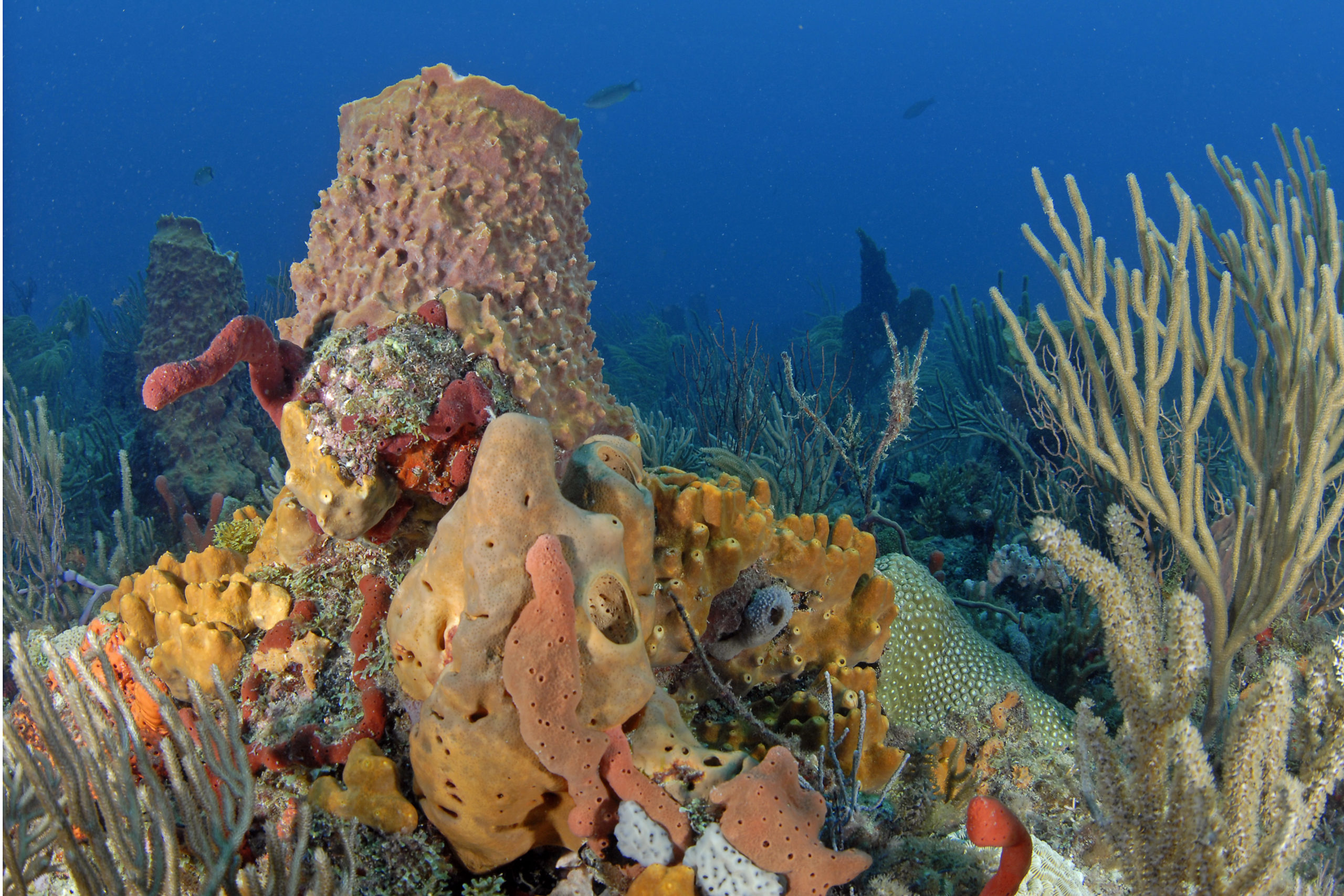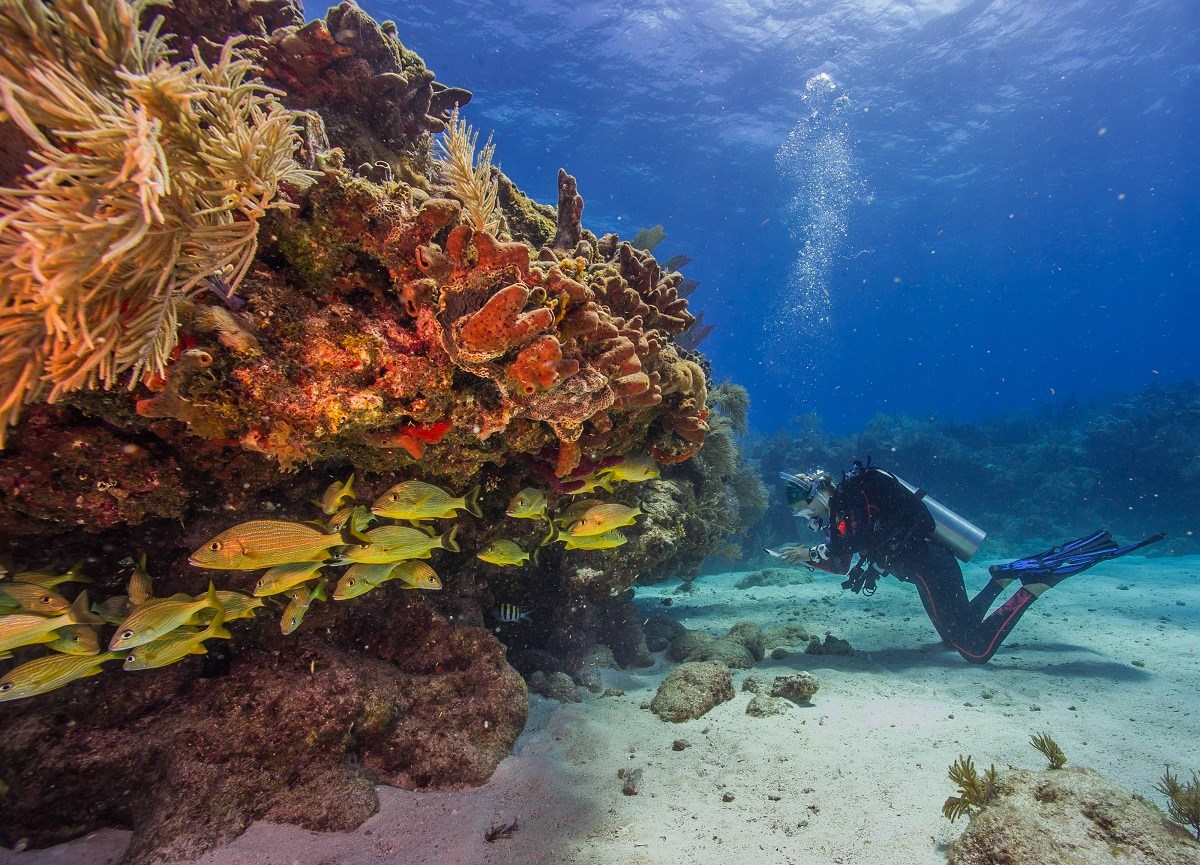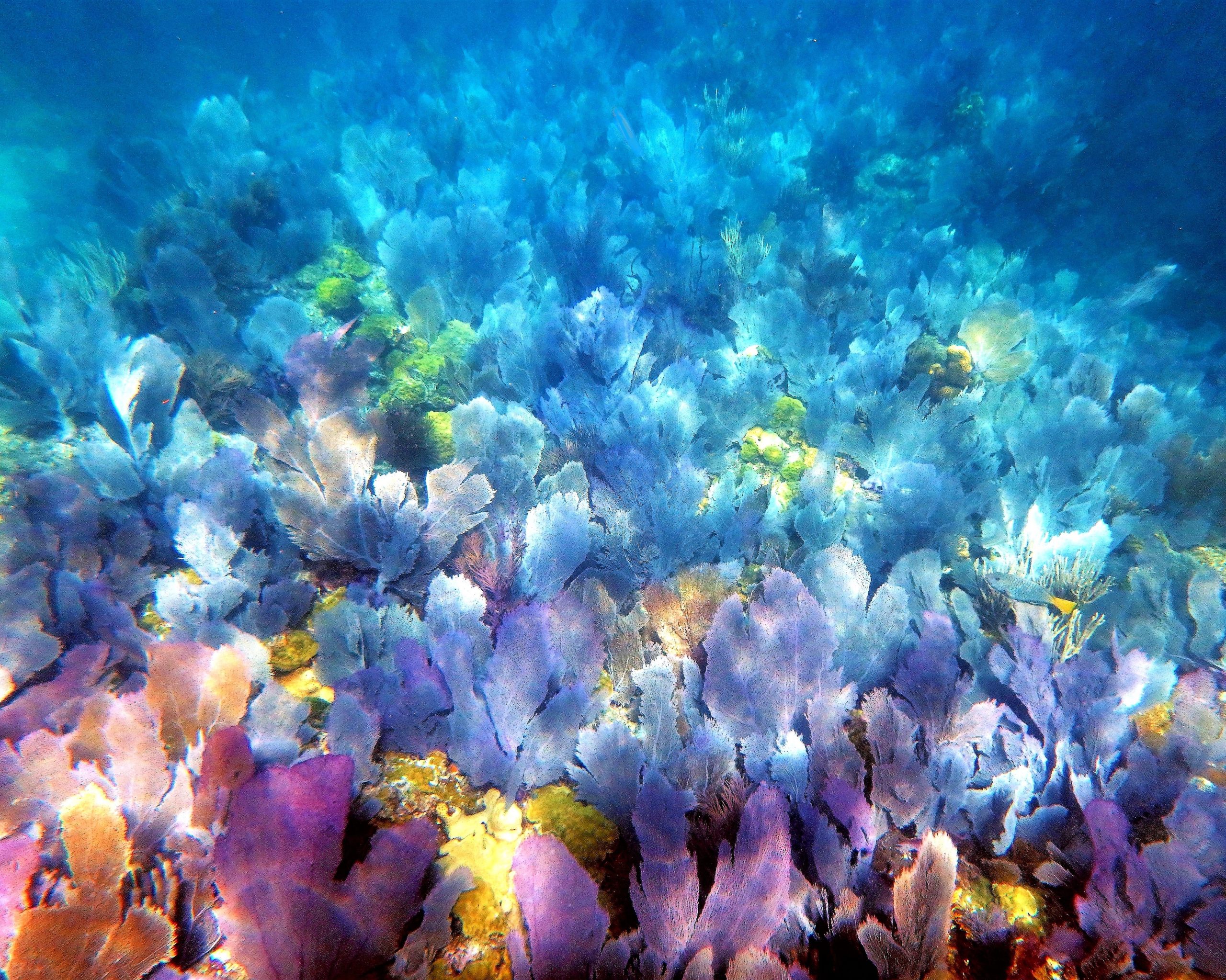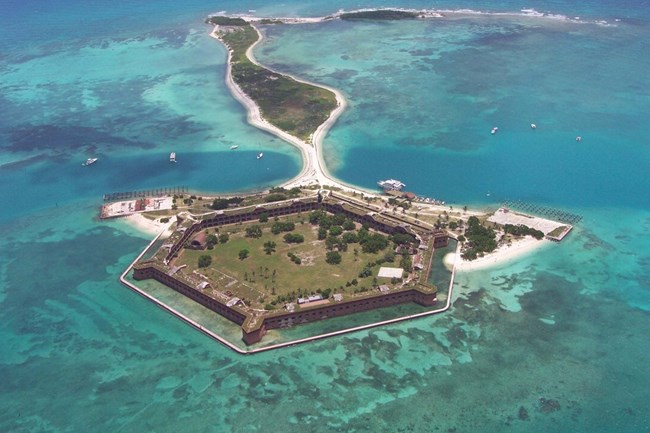News & Updates
Gluing It Back Together: Novel Probiotic Treatments for Stony Coral Tissue Loss Disease
Written by: Smithsonian Marine Station
Treatments for stony coral tissue loss disease (SCTLD) are being approached from a new perspective at the Coral Health and Marine Probiotics (CHAMP) Lab at the Smithsonian Marine Station in Fort Pierce. The lab is investigating the use of probiotics (beneficial bacteria) to stop disease lesion progression on infected corals or even prevent infection altogether.
If you have ever eaten yogurt or aged cheese, then you have eaten probiotics. Our human gut needs a variety of bacteria to function correctly, and so do corals. For humans and corals, probiotics fight off harmful bacteria to keep the hosts healthy.
The CHAMP lab is isolating beneficial bacteria from corals that are naturally more resistant to SCTLD in hopes that these bacteria can help other corals fight the disease. So far, one strain shows promise as a treatment for SCTLD, and it continues to be cultivated in the lab. It produces antibacterial compounds that kill harmful bacteria, which has been effective at slowing or even stopping disease lesion progression on most treated corals in the laboratory.
This treatment is unique because it could have two direct benefits: It halts the current infection and it may boost the coral’s immune system to promote resistance to new infections. When healthy corals treated with probiotics are put next to infected corals in the laboratory, the disease progression stopped or slowed on the neighboring infected corals. This suggests probiotics may provide disease protection to neighboring corals.

After effective laboratory experiments, the next step was to determine how to test the treatment in the field. The team created ways to administer probiotic treatments to corals along Florida’s Coral Reef. With the help of Dr. Brian Walker’s GIS and Spatial Ecology laboratory at Nova Southeastern University, funded in part by a grant from the Florida Department of Environmental Protection, reef research sites were established in Southeast Florida where the probiotics were applied, and researchers returned to the treated corals to monitor them over time. Disease progression is compared each month to determine if treatments are successful at stopping SCTLD.
Since the probiotic bacteria are alive, transporting them to the reef is a challenge. It’s necessary that the high concentrations of bacteria have enough oxygen and remain at a stable temperature to survive all the way from the laboratory to the field. Researchers mix the beneficial bacteria with seawater, much like the ocean environment, and then fill syringes with this mixture so it can be transported down to the reef without the probiotics floating away. An air bubble in the syringes keeps the mixture constantly moving and supplies oxygen to the bacteria.
One of the biggest challenges facing the CHAMP lab was coming up with ways to apply the probiotics to corals in an open ocean environment. The lab had to find ways to administer the probiotics to the infected coral underwater and allow time for the bacteria to colonize on the coral before floating away. With some creativity involved, the lab developed a weighted bag enclosure to place over the infected corals. The probiotic-filled syringe is injected into the bag, which remains over the coral for two hours to ensure the beneficial bacteria have time to colonize on the coral. This bagging method can be used to treat entire coral colonies. Like any good scientific method, this process was perfected over time. The CHAMP lab struggled with the enclosures floating off the coral, falling over, or even being too small to fit over large coral colonies. After the first trial run, it was determined that larger, thicker, heavier bags were most effective. See a short video clip of the probiotics field test.

The lab also experimented with a probiotic-loaded paste to apply directly to individual coral disease lesions, which allows a high concentration of probiotics to be administered to an infected area. Since the paste needs to be non-toxic to the beneficial bacteria, researchers had to come up with the appropriate paste recipe. After creating pastes as thick as taffy and as thin as honey, they found the right consistency. The new paste keeps the probiotics viable and hardens into a gel-like substance when in contact with ocean water to adhere to the coral tissue.

These innovative strategies led to experimental probiotic treatments on Florida’s Coral Reef for the first time. The CHAMP lab plans to establish new experimental sites and monitor healthy colonies surrounding the research sites to see if they are less prone to contracting SCTLD. The CHAMP lab has SCTLD and reef management projects supported by DEP and other partners as part of the collaborative SCTLD response effort in Florida. Researchers are eager to determine the effectiveness of these treatments and will continue to find creative ways to deliver treatments and advance the knowledge of this devastating disease.
The Florida Department of Environmental Protection, National Oceanic and Atmospheric Administration, National Park Service and Florida Fish and Wildlife Conservation Commission lead a collaborative effort with dozens of partners from federal, state and local agencies, non-governmental organizations, universities, and members of the community to research and rescue Florida’s Coral Reef.
Read Original Article
